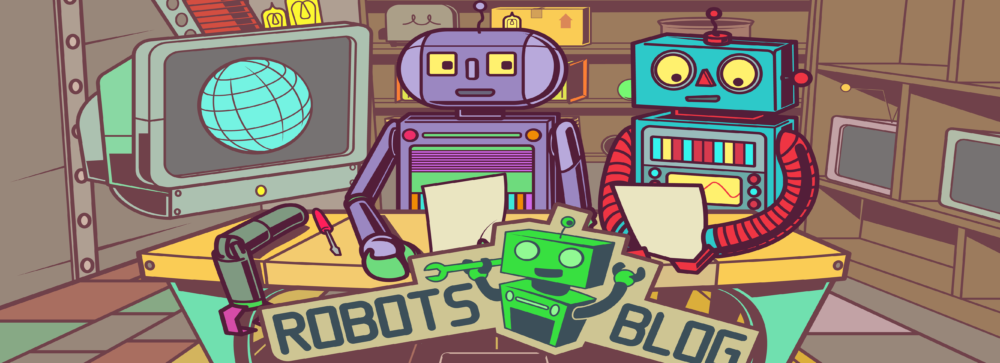Schlagwort-Archiv: Robot
New Robot Companion Unveiled on Kickstarter
Adelaide, Australia – September, 2023 – The new Ortomi Generation 4 has been released on Kickstarter, and they’re simple, comforting and interactive little friends, designed to make people smile. They’re a creation from Ortomi, a small Australian start-up on a mission to capture the joy and comforting presence of real pets.
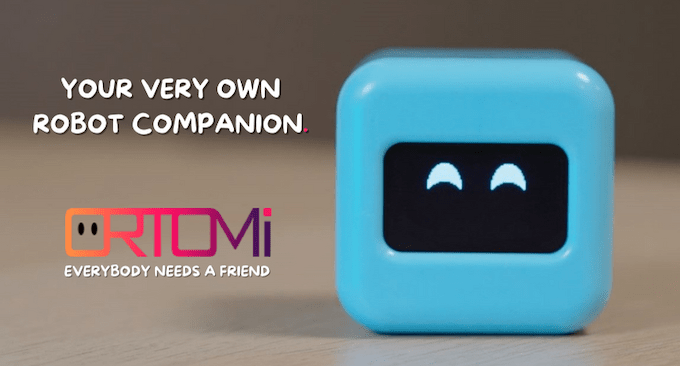
An Ortomi has a simple face that changes with different expressions and moods – both randomly and interactively. They respond to gestures such as being petted, prodded and picked-up; and respond differently based on their mood – such as when they are happy, sad, asleep, angry or bored. As well as now making cute beeps and boops (with a silent mode), the new Generation 4 has a larger screen, more expressions, moods & interactions, and a smooth injection moulded shell – benefitting both aesthetics and manufacturability.
The Kickstarter launched on August 29th, and met its goal of AU$23,000 in under 10 hours. It currently sits at AU$46,000, as people continue to rally behind project and help fund subsequent stretch goals:
1. AU$50,000 Custom Expression Creator:
Users will be able to draw, share and browse custom expressions that they can teach their Ortomi.
2. AU$70,000 Silicone Cases:
Squishy, silicone, key-ring cases will be developed and produced, improving the portability and personalisation options of Ortomi, as well as adding a satisfying tactile feel.
3. AU$100,000 Interactions between Ortomi:
Wireless capability will be developed for Ortomi to interact with each other, enabling everything from cute reactions to complex relationships.
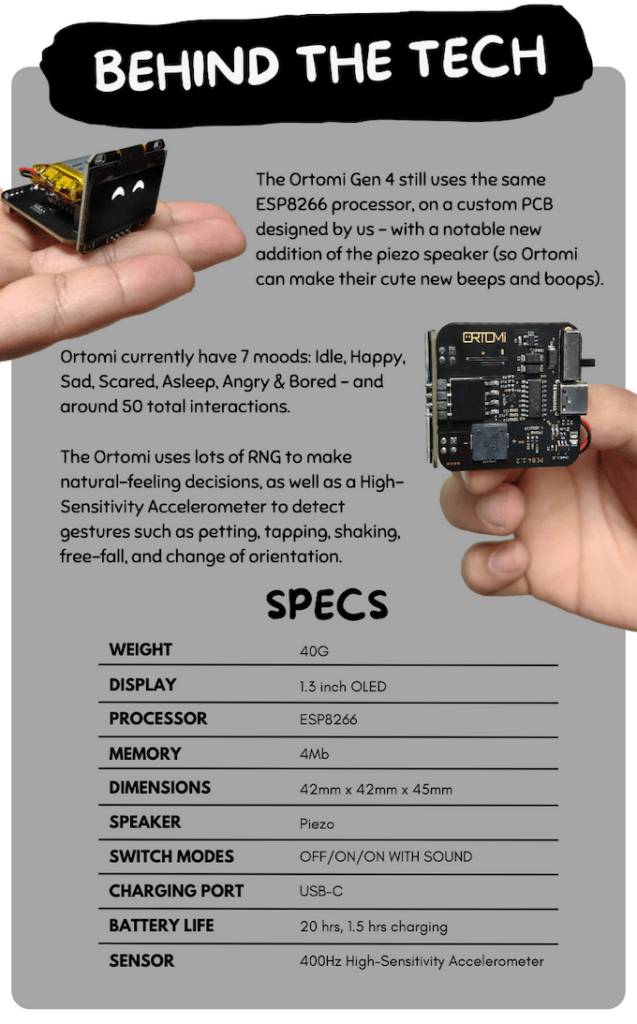
As well as being completely portable with a 20hr battery life, Ortomi are set apart from other robots on the market by their personalisation. Like dogs, or goldfish – Ortomi are a whole species, and each one is meant to be unique. They come in many different colours, with different accessories, have different personalities, and are usually even given their own name by their owner.
The Ortomi 4 is set to ship in November 2023, and is set to mark a new chapter for the young Australian company in terms of scale and impact.
More details on the Ortomi Generation 4, including the launch video, can be found here: https://www.kickstarter.com/projects/ortomi-robotics/ortomi-an-adorable-robot-companion
Variobot VariAnt: The Robot Ant
The presence of robots in our modern environment is getting increasingly casual to see. Robots are progressing rapidly in terms of both their capabilities and the potential uses they have. Examples of this include self-driving automobiles and drones. The VariAnt, a robot created by Variobot, is another amazing example.
VariAnt: At the First Glance
VariAnt, a robot ant, moves and acts almost exactly like its biological model. It independently explores its environment using a sensor system to detect obstructions or markers. The Variobot programmable kit is appropriate for researchers who are passionate and young at heart.
Advanced Autonomy
Like the majority of living things, the variAnt adjusts to the surroundings by detecting relative brightness. Using a network of patented sensors is made feasible. The autonomous robot ant has light sensors connected to its body, legs, antennae, and jaw claws that can be positioned as needed.
A processor is housed on an Arduino-compatible nano board, which serves as the ant robot’s central processing unit (CPU). The small control unit provides connections for two motors, 12 analog sensors, 8 digital I/Os, 2 programmed buttons, 2 reed switches for step numbers, that may be used in any way, and 15 status LEDs that can be plugged in and switched as needed.
The state of the sensors, motors, and reed switches may all be indicated by the LEDs. Inside the ant’s head is a tiny circuit board that is equipped with plug-in ports, which enables the flexible combination and extension of environmental sensors.
The lithium-ion battery that comes standard with the variAnt has a run time of around 3 hours and can be recharged using the provided USB cord.
The Walking Mechanism
The robotic ant makes use of these to identify objects, lines, light sources, or shadows in its surroundings, and then either follows them or stays away from them in an intentional manner.
The purpose of the walking mechanism that was created and patented by Variobot is to mimic the natural mobility of an ant as closely as possible. This is doable with only 24 different components made of acrylic.
VariAnt: Best for
For individuals of all ages, the robot ant is also an engaging and entertaining toy. You can use this set to design your own robot to behave, move, and appear like an actual, but much bigger, ant. The robot is an interesting thing to watch due to its distinct motions and behaviors, and due to its size, it can be used in a number of scenarios. The variAnt kit costs around €199.
Conclusion
The VariAnt might revolutionize robotics and our understanding of nature. Since it mimics ants, the VariAnt can perform many tasks that conventional robots cannot. Whether employed for research, environmental monitoring, or as a toy, the VariAnt is a groundbreaking robotics innovation that will captivate people worldwide.
Robohood AI-Driven Robotic Painter Introduces Stable Diffusion and Text Generation Neural Network Model
Robohood, world’s first robotics & AI-driven art & technology company has integrated both Stable Diffusion and a text generation neural network
FORT LAUDERDALE, FLA. (PRWEB) APRIL 25, 2023
Robohood, an art & technology company specializing in AI-driven solutions for robotics-generated physical art, has integrated two forms of AI technology into their software, Stable Diffusion and ChaptGPT both originally developed and released in 2022.
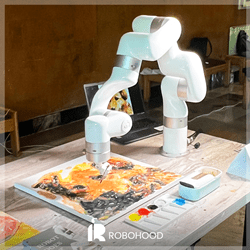
Robohood’s integrated Stable Diffusion technology is a deep learning, text-to-image model primarily used to generate detailed images conditioned on text descriptions, though it can also be applied to other tasks such as inpainting, outpainting, and generating image-to-image translations guided by a text prompt. While the integrated ChatGPT technology is a fine-tune approach to transfer learning using both supervised and reinforcement learning techniques with detailed and articulate responses.
Through these newly integrated technologies, users now have two options when creating a painting with Robohood. The first option involves uploading an image from a device, generating a render, and then painting with a robot, which was the conventional method. Alternatively, they can use our AI-generation tool. To use this tool, users can input an image description in the „Generate by text“ field or request a topic suggestion in the „Can AI suggest a topic for you?” and the tool will offer suggestions in the interface. Once an idea has been selected, the user can copy and paste it into the image generation field and Robohood technology will generate an image that it can later render onto canvas.
“These newly integrated technologies allow for artists to have multiple options when creating artwork within the Robohood interface,” stated Victor Peppi, CEO of Robohood. “Combining art with AI-driven technology is our passion at Robohood and these technologies allow artists to have more freedom and solutions throughout their creative process.”
About Robohood
Robohood is an art & technology company specializing in AI-driven solutions for robotics-generated physical art. Robohood’s groundbreaking software/hardware solution, a brainchild of a brilliant team of software engineers, robotics experts and artists, turned Robohood into the world’s first robotics art company. Producing everything from software to robot-specific painting supplies, Robohood’s solution utilizes robotic manipulators to paint with oil and acrylic paints on various surfaces. To learn more about Robohood, visit the website at https://robohood.com/, and follow us on Facebook: https://facebook.com/RobohoodArts, and Instagram: @robohood.inc.
Short interview with Roy, the founder of „The OffBits“
Sebastian Trella from Robots-Blog had the opportunity to conduct a short interview with Roy Barazani from „the OffBits“.
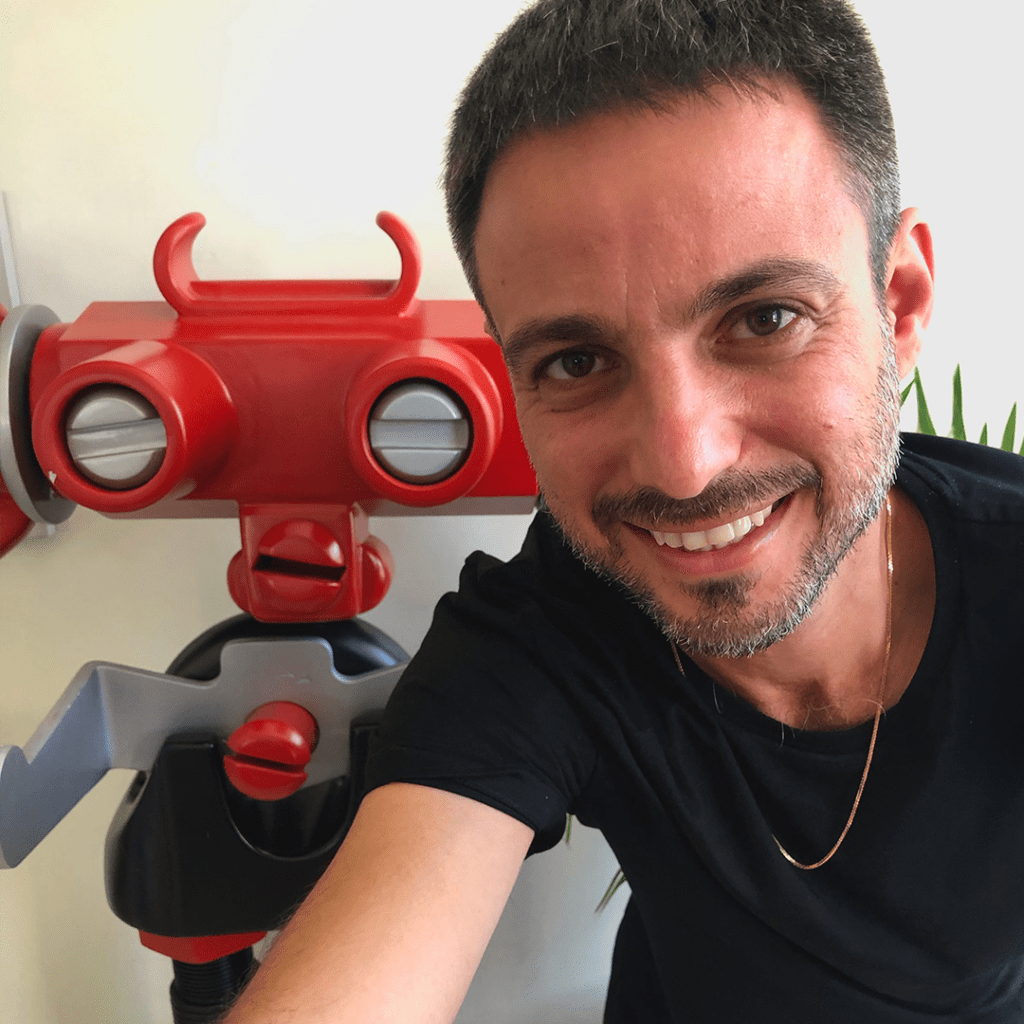
· Robots-Blog: Who are you and what is your job at the OffBits?
Roy: I am Roy Barazani – The OffBits founding father
· Robots-Blog: What inspired you to create the OffBits toy?
Roy: I guess I’ve always been fascinated by the idea of re-design. Even as a child I used to break my toys apart and try to rebuild them in new and different ways. Looking back, this allowed me to develop my imagination and ability to fantasize.
· Robots-Blog: How did you come up with the name „the OffBits„?
Roy: The OFFBITS started out by playing with random parts I found in my toolbox while working on an exercise before starting my design studies in college. Suddenly I found I had made a little robot! I kept this idea with me during my studies, and for my final project built a whole city of them made from recycled parts. It was really well received and I knew I had a great idea in my hands. It took a few years of development and testing in Maker Faire events and boutique design stores and now I finally feel they are ready for the world.
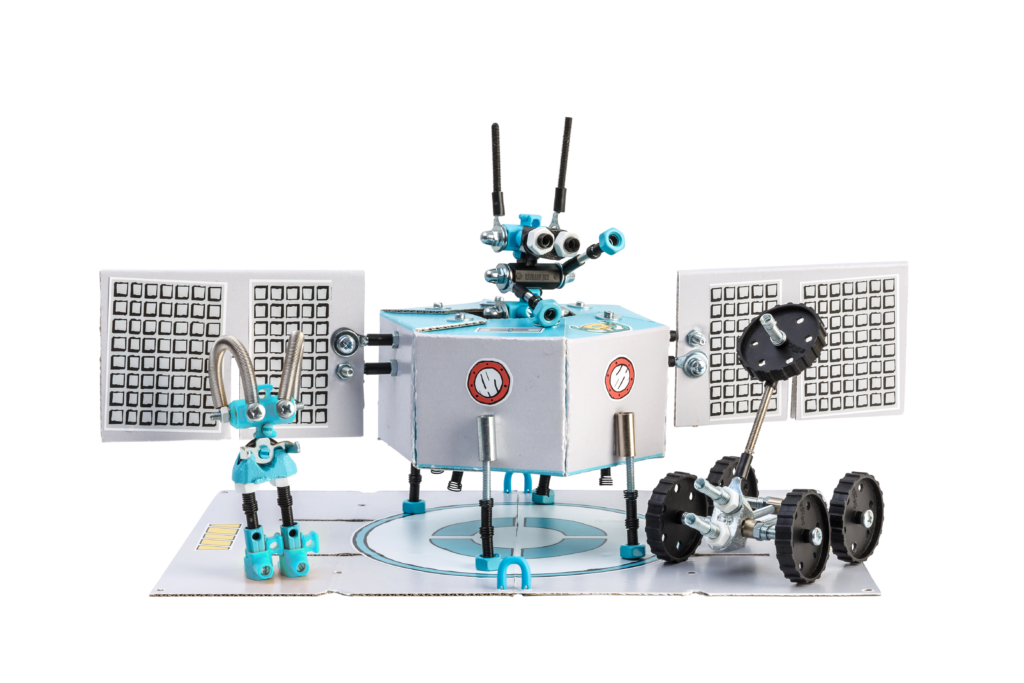
· Robots-Blog: Do you have a lot to do with robots in your job/everyday life?
Roy: Yes, I love robots and I have collected robots for years!
· Robots-Blog: How did sustainability factor into the creation of the OffBits?
Roy: I see The OFFBITS as a new way of playing with toys, an “open-source” platform with no rules, so each creation can be as unique as the one who built it. I love the way people can take the original design and then make something completely different. Also, the fact it is made of components we all have around us means there are no cost or availability limits to what people can do with them.
Offbits are a sustainable and eco-friendly educational toy that encourages zero-waste principles and practices through a fun and interactive experience. It’s a great way to bring awareness and inspire positive actions in preserving the environment.
We don’t think you need many toys, but what you do choose should be made to last.
The possibilities are endless with The Offbits, you can create anything from a simple robot to a complex model while using sustainable materials and reducing waste.
· Robots-Blog: And which is your favorite robot from the OffBits?
Roy: I love all my robots family!
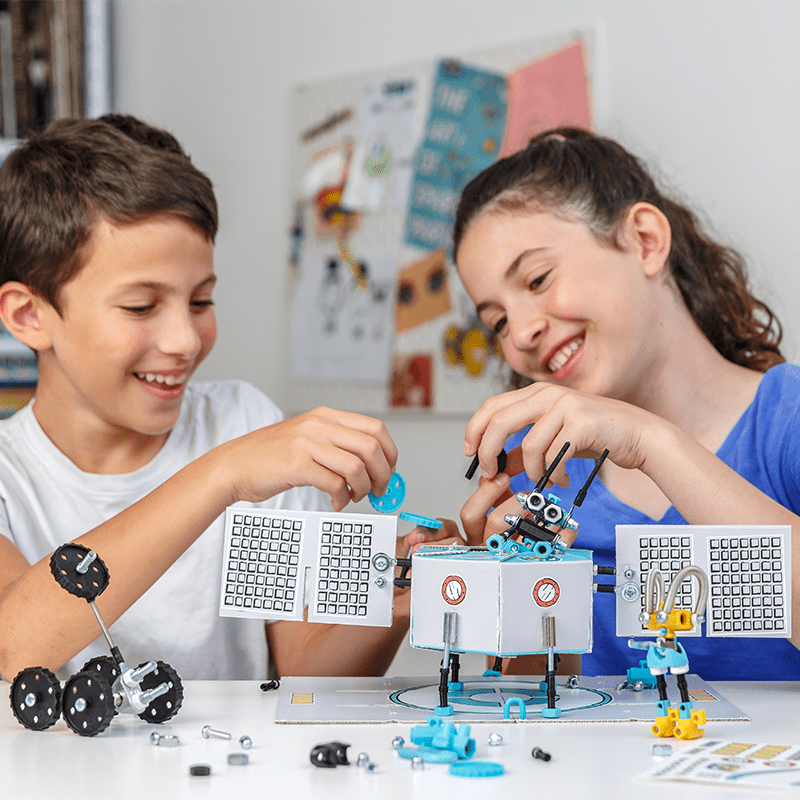
· Robots-Blog: Can you tell us about any challenges you faced while designing the OffBits?
Roy: From a design perspective, working with standard hardware components brought many unique challenges. For example, choosing the right mix of bits in the kits (both functionally and aesthetically) required a lot of trial-and-error type work, and then of course there is the issue of connecting parts that weren’t designed to fit together.
· Robots-Blog: How do you envision the OffBits evolving in education fields?
Roy: This is a S.T.E.A.M toy helping young minds grow in the fields of Science, Technology, Engineering, Art and Math. The OffBits toys encourage the development of fine motor skills, spatial reasoning, problem-solving, and imaginative play.
The hands-on building process allows users to learn about robotics and engineering concepts in a fun and interactive way. The step-by-step instructions for building and programming the Offbits kits, making it easy for users of all ages to understand the principles behind the technology.
The OffBits offer educational resources such as workshops, online tutorials, and educational material that could help kids to learn about sustainable practices and technologies.
· Robots-Blog: What can you tell us about your community?
Roy: The Offbits community feature allows users to share their creations and ideas, providing inspiration and a sense of collaboration. The Offbits users have challenges for every level. When they create, share and pass the challenge they can earn tokens for their future purchases.
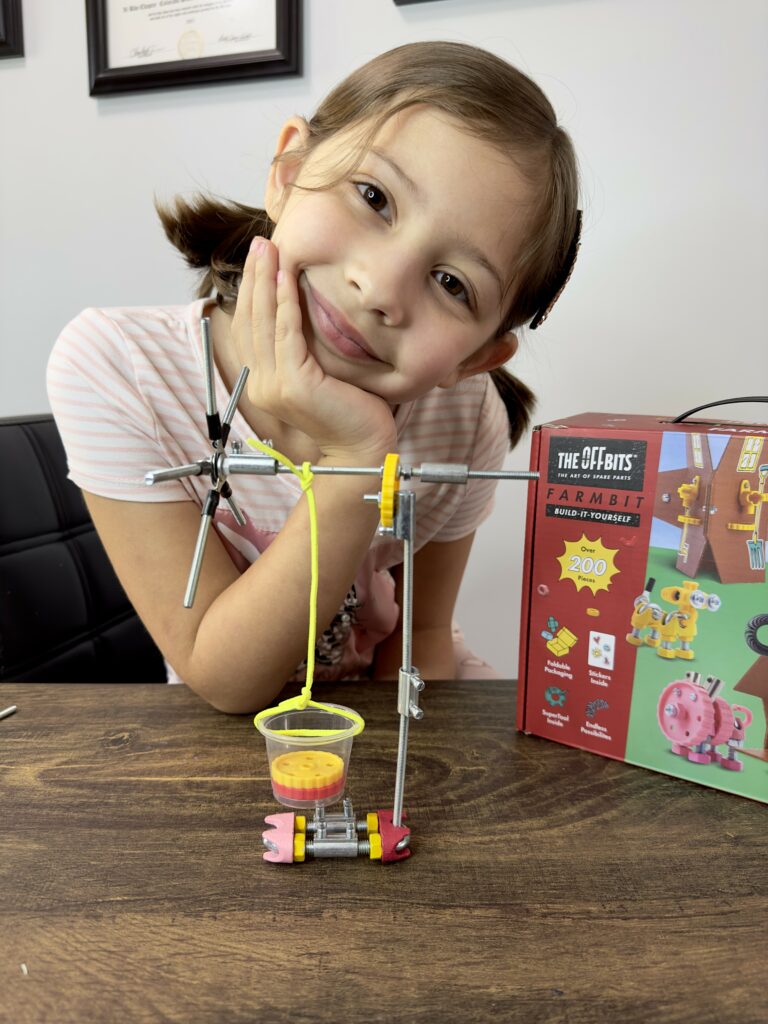
Variobot variAnt Timelapse and Realtime Build Videos
Digital Robot HORST1000 with a payload of up to 8 kilograms
Constance, February 28th, 2023 – Up to 8 kilograms payload, a reach of 1,018 millimeters, short cycle times: fruitcore robotics is launching HORST1000, a new robot whose performance parameters enable a wide range of additional applications and better meet the growing market for industrial processes such as machine placement and pick & place applications.
HORST1000 is a completely newly developed robot kinematics system that incorporates all the knowledge gained from industrial practice in recent years. Building on existing technology innovations, fruitcore robotics‘ patented robot transmission for HORST1000 has been further optimized using a machine learning algorithm, resulting in a significant increase in performance. In terms of design, fruitcore robotics focuses on a compact footprint and aesthetics, as it has done with its robots that have already won multiple awards in the past, such as the Fokus Open Award and the German Innovation Award. With the introduction of the new model, the predecessor HORST900 will no longer be continued.
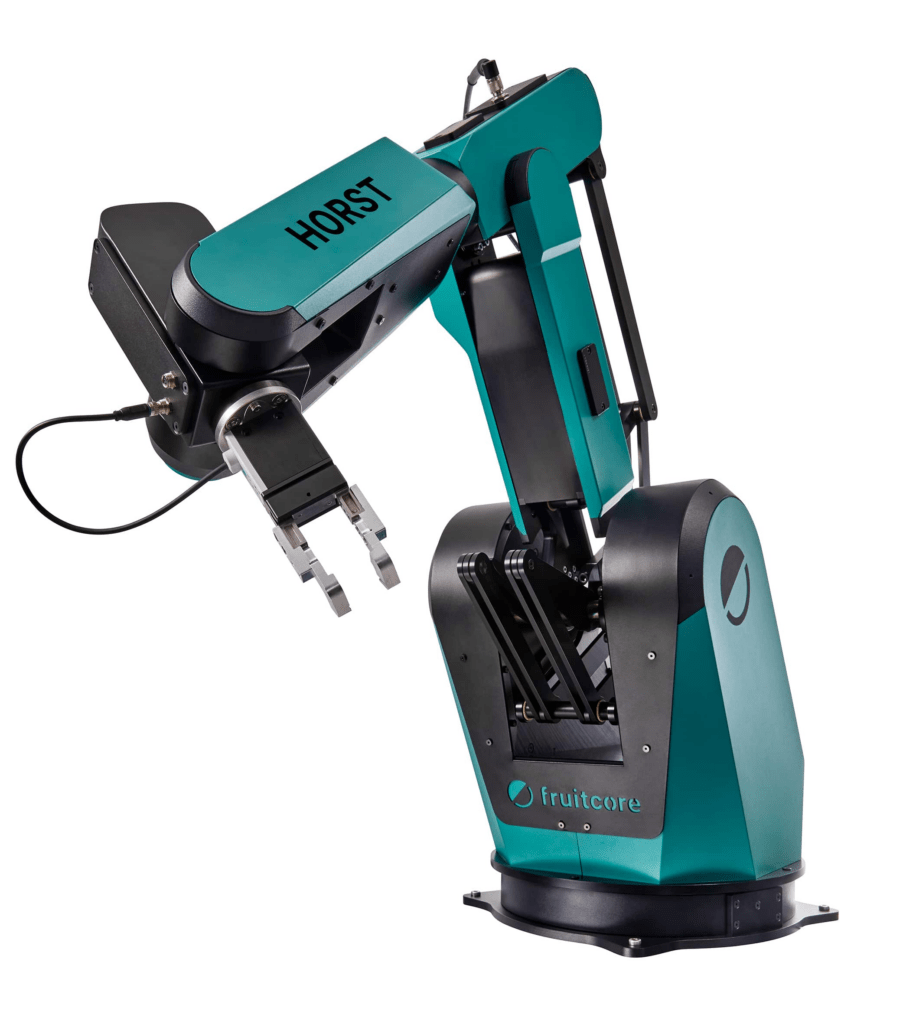
Performance improvement based on existing technology innovations
In HORST1000, key performance features such as payload, range and workspace have been significantly improved. The new all-rounder has a payload of up to 8 kilograms and a reach of 1,018 millimeters. The developers placed particular focus on the workspace of HORST1000. The threedimensional workspace has increased by 40 % compared to HORST900, allowing 50 % larger trays to be processed. From the base, HORST1000 can move around 230 millimeters further forward than its predecessor, which corresponds to a 43 % longer linear path. This allows customers to enter machines more easily. Higher acceleration values of the individual axes in the nominal load range also ensure shorter cycle times. In a classic pick & place process, this improves the cycle time by up to 20 %.
„The technological innovations of HORST1000 let us further increase the performance difference compared to current cobots,“ explains Jens Riegger, Managing Director (CEO) and Co-Founder of fruitcore robotics. Patrick Heimburger, Managing Director (Chief Revenue Officer) and Co-Founder of fruitcore robotics, adds: „We now allow an even wider range of applications and help our customers implement industrial processes such as machine placement and pick & place even more easily and efficiently.“
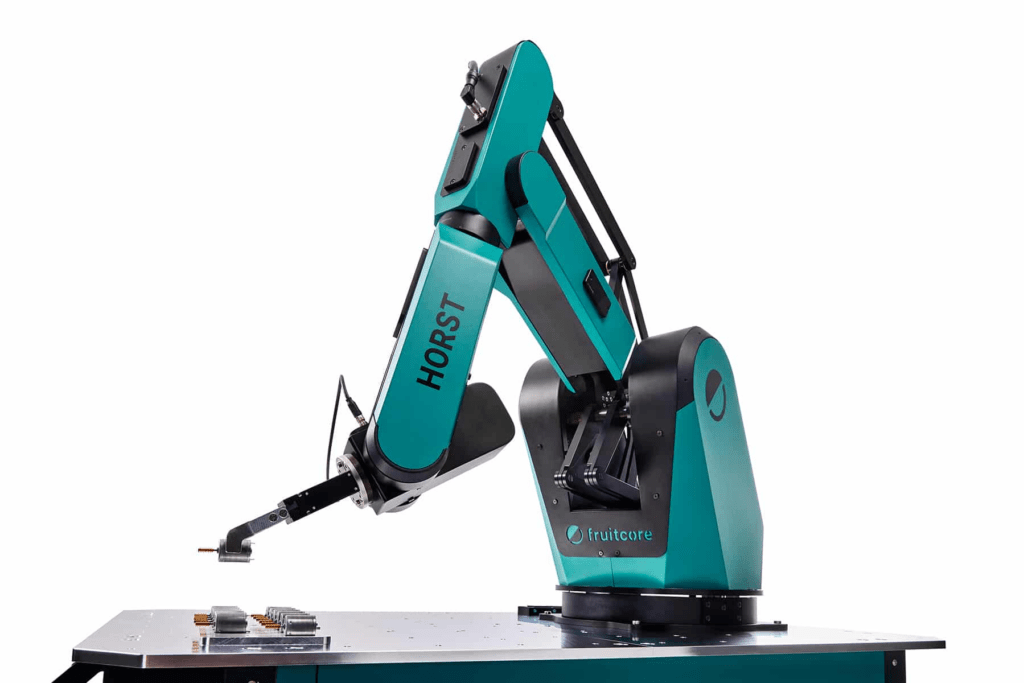
Optimized for Machine Loading and Pick & Place
Thanks to its range and workspace design, HORST1000 is tailor-made for loading and unloading any machine tools; especially for lathes and milling machines, the robot is also ideally suited due to its software and interfaces. The robot can reach deep into the machines, the high axis accelerations enable a short cycle time. In addition, the maximum payload of 8 kilograms also allows the use of heavy tools and complex multiple gripper systems. As an automation solution, Digital RobotHORST1000, like its predecessor HORST900 and its brothers HORST600 and HORST1400, includes not only powerful and cost-effective hardware. It follows a coordinated operating concept, which not only makes the operation of the robot particularly simple, but also the implementation of the entire application. All components involved in the process, such as grippers, CNC systems and safety systems, are operated via the horstFX graphical user interface and centrally networked with the horstCOSMOS IIoT platform.
For example, the machine tool can be integrated as a 3D model in horstFX and component variants can be easily traded via the program management of the operating software. Switching between two tools can be mapped on the software side via the multi-tool feature. In addition to the connection to the IIoT platform, all fruitcore robotics robots come with an IIoT surf stick with SIM card as standard. This offers companies the possibility to go online with the robot system without having to integrate it into their company network. Customers can establish an internet connection as required and use horstCOSMOS to view their robot fleet on dashboards, including the process data of the robot application. This allows processes to be optimized independently or in coordination with fruitcore robotics. In addition, availability is increased because maintenance can be carried out via predictive maintenance and a quick response can be made to service cases via remote maintenance.
Pre-orders now possible
HORST1000 can be pre-ordered from the manufacturer from now on. Delivery will take place from 01.06.2023. The price for the new all-rounder can be found on the manufacturer’s website.
Specifications HORST1000:
| Specification | HORST1000 |
| Max. Payload | 8 kg |
| Nominal Load | 5 kg |
| Max. Range | 1018 mm |
| Mounting Surface | 380 x 380 mm |
| Weight | Approx. 70k g |
| Repeatability | +/- 0,05 mm |
| Protection Class | IP54 |
| Sound Level | < 70 dB (A) |
| Power Supply | 230VAC, 50-60Hz, typ. 350W |
| Surrounding Temperature | 5-40 °C |
| Standard Color | RAL 5021 (Water Blue) |
Robots-Blog makes Unitree Quadruped Go 1 dance
Unitree Quadruped Go 1 Dance Video 1+2. Find the latest News on robots, drones, AI, robotic toys and gadgets at robots-blog.com. If you want to see your product featured on our Blog, Instagram, Facebook, Twitter or our other sites, contact us. #robots #robot #omgrobots #roboter #robotic #automation #mycollection #collector #robotsblog #collection #botsofinstagram #bot #robotics #robotik #gadget #gadgets #toy #toys #drone #robotsofinstagram #instabots #photooftheday #picoftheday #followforfollow #instadaily #werbung #unitree #quadruped #robotics #mybotshop #dog #dance @mybotshop @unitreerobotics
Luwu Intelligence Technology Announces Launch of XGO 2 – World’s First Raspberry Pi Robotic Dog with An Arm
Luwu, a STEM education technology company focused on the research and development of advanced robotics, has announced the launch of XGO 2, an advanced desktop-sized AI quadruped robot with an arm. This state-of-the-art robot brings a new level of intelligence and functionality to the world of robotics. XGO 2 is now available on Kickstarter: https://www.kickstarter.com/projects/xgorobot/xgo-2-worlds-first-raspberry-pi-robotic-dog-with-an-arm
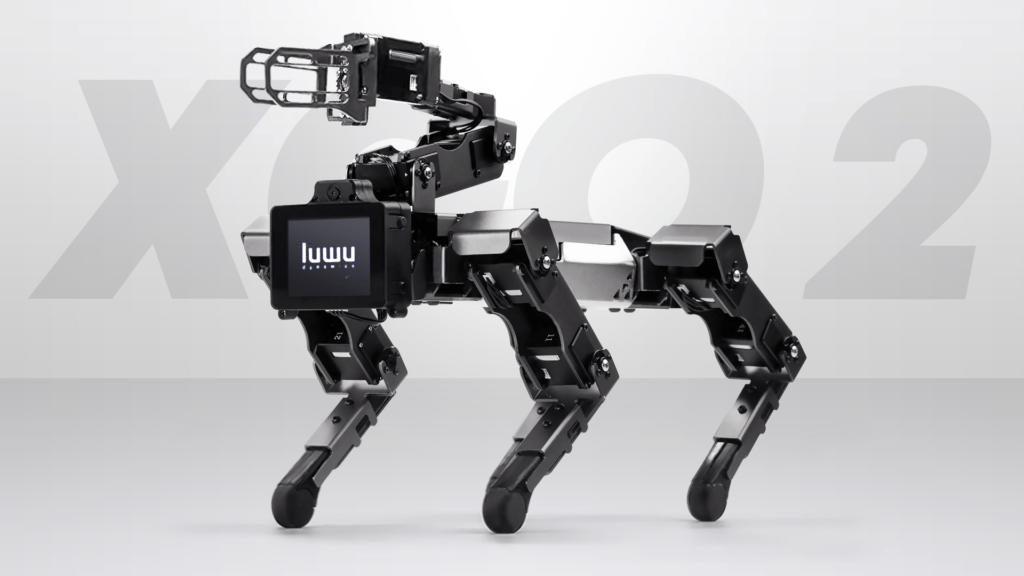
XGO 2 is an intelligent and agile robotic dog, capable of sophisticated movements, 12 degrees of freedom, and a variety of motions. Its open-source nature allows users of all programming levels to program and customizes it with Blocky and Python. Additionally, the advanced AI modules built into XGO 2 allow for visual, voice, and gesture recognition, enabling the robotic dog to hear, understand, and respond to users like a real dog.
One of the most notable features of XGO 2 is its robotic arm. This arm allows it to perform tasks such as grasping and manipulating objects, making it more versatile and opening up a whole new realm of possibilities for the robotic dog to be used in various scenarios.
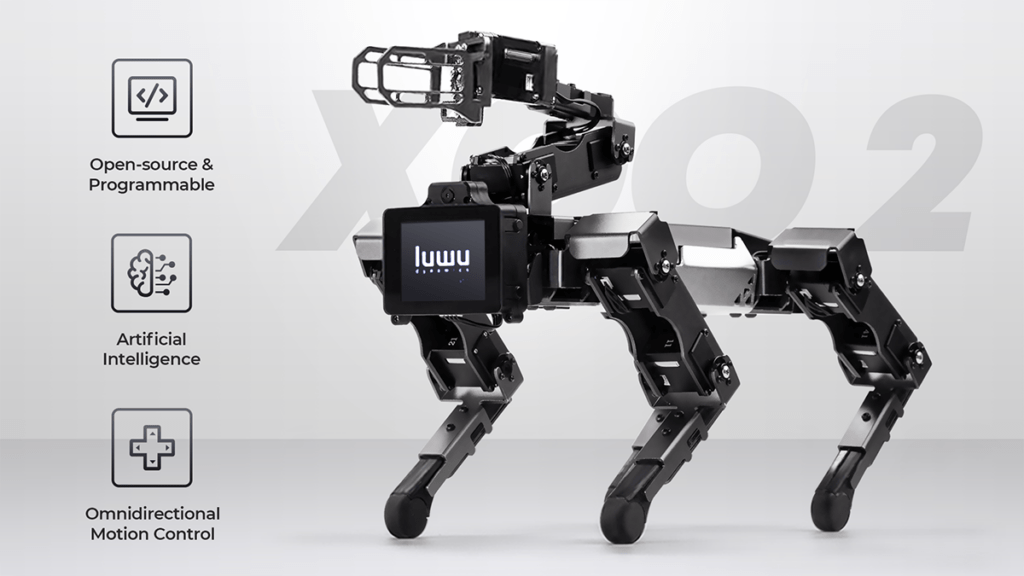
XGO 2 is also incredibly easy to control. Its user-friendly interface allows for easy programming and control, making it accessible to users of all skill levels. Whether you’re looking to create a new robot application, enhance your research, or simply have fun with a cutting-edge piece of technology, XGO 2 is the perfect choice. Its unique combination of intelligence, agility, and affordability makes it an ideal choice for anyone looking to add a robotic dog to their collection.
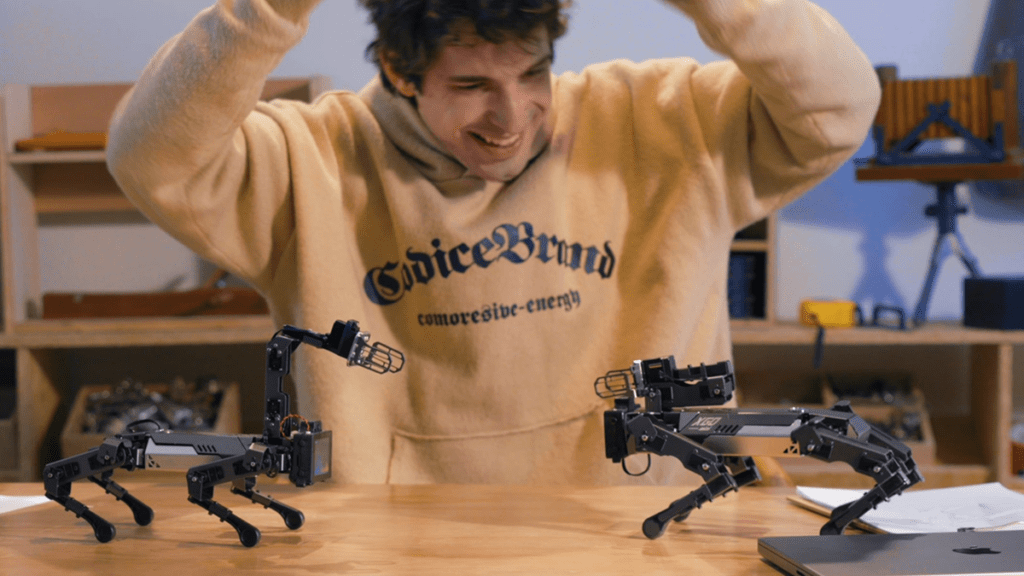
XGO 2, the World’s First Raspberry Pi Robotic Dog with an Arm, is an incredible robotics platform for entertainment, STEM education, and exploring creativity. XGO 2 is now available for pre-order on Kickstarter with special pricing for early supporters. Learn more here: https://www.kickstarter.com/projects/xgorobot/xgo-2-worlds-first-raspberry-pi-robotic-dog-with-an-arm
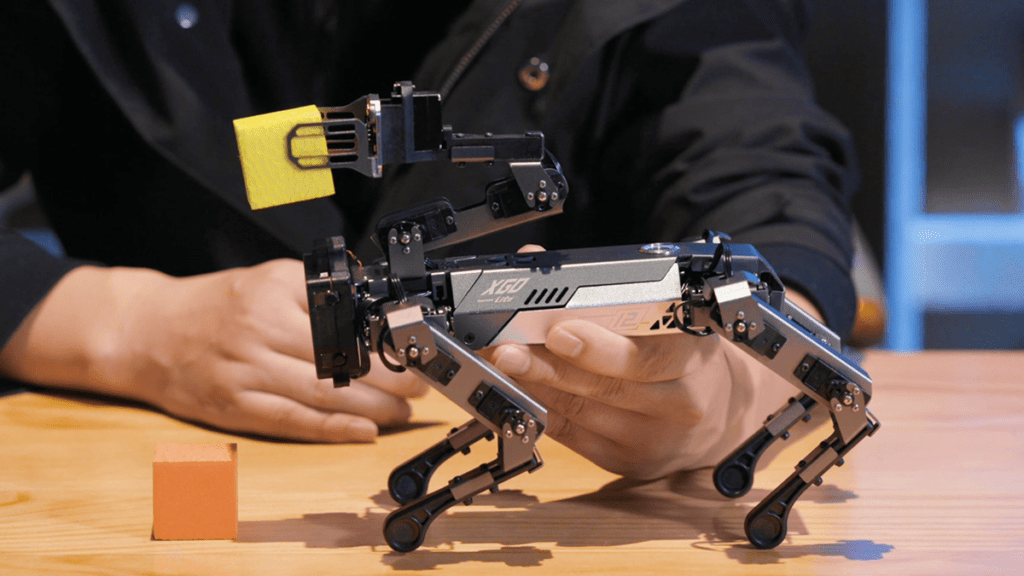
Cherry Tart: The Interactive & LEGO-compatible crafting Nature-Inspired robot kit for kids & adults to innovate
Inspired by Nature, Crafted by You
Are you ready to add a little spark of creativity and innovation to your life? Look no further than Cherry Tart – the first crafty sound-activated, bio-inspired building block kit for kids and adults. We believe that learning and fun should go hand in hand. And with Cherry Tart, that’s exactly what you’ll get.
Introduction
The Cherry Tart crafty series are designed to spark creativity and imagination with a hands-on STEM robot kit for future innovators. A combination of colorful LEGO-compatible building blocks with customizable skins creates a joyful and creative challenge for kids & adults. This kit provides nature’s beauty, enjoyment of design and building, and art. Cherry Tart crafty kit is a LEGO®-compatible and coverable building block that offers an innovative sound activation method to make your nature-inspired projects interactive and livelier.
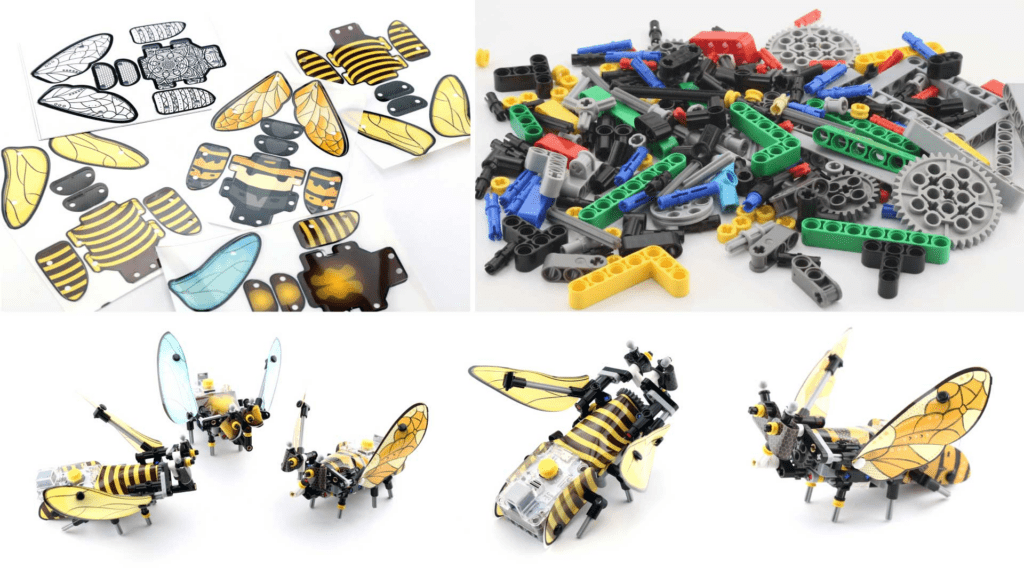
With this kit, you can create your own interactive, nature-inspired projects that come to life through sound activation. Whether you’re a seasoned robot builder or just starting out, Cherry Tart offers something for everyone.
Crafty robot kit benefits
The Cherry Tart crafty kit is not only LEGO®-compatible but also coverable with a wide range of foldable and customizable skins that allow for personal expression. You can cover your model with printed skins or paint and decorate your own skin. The result is an elegant conversation piece that’s a tasteful addition to any home, or maybe just to impress your friends and family.
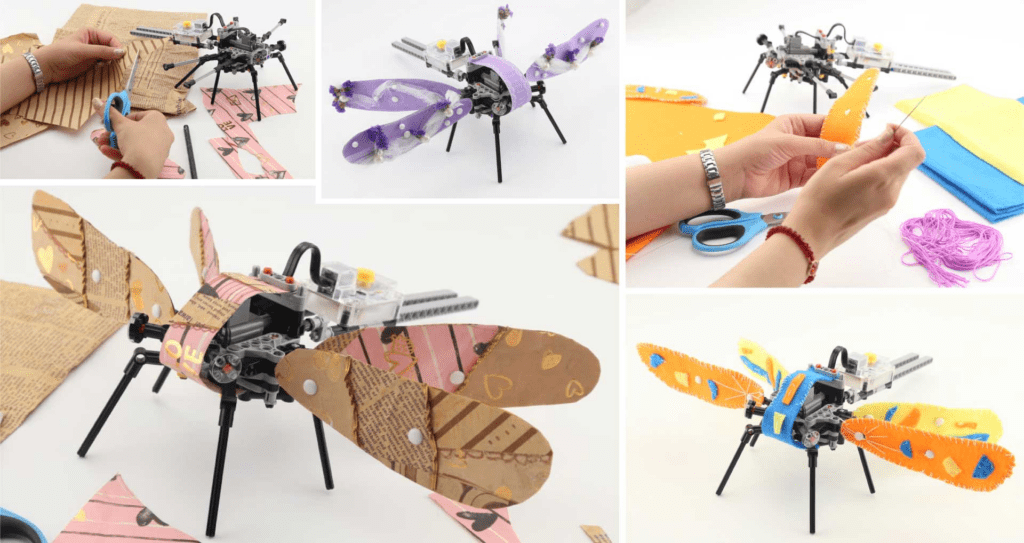
What you can build?
With Cherry Tart, you can create your own robot designs and program them to move, react to their environment, and even play games. The robot kit is easy to assemble and can be customized with your own crafts and materials, making it a great way to learn about robotics and unleash your creativity. Kids & adults can build sound-activated creatures. It actively involves the kids and encourages them to take physical action. Build the main model using LEGO-compatible building blocks. Select your favorite skin or paint your customized skin, take it out from the printed skin sheet, and snap them on your model. Turn the Cherry Core ON and select your desired mode. Surprised! The model comes to life. Change your model skin and try another one.
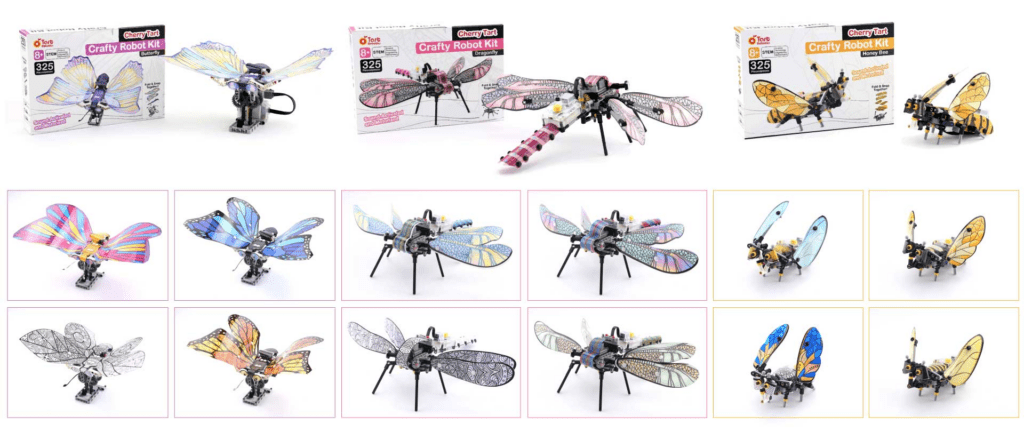
What’s Included?
Cherry Tart teaches kids and adults about robotics in a fun and engaging way. The kit includes everything you need to build your own robot and bring it to life, including a Cherry Core sound-activated microcontroller with a built-in rechargeable battery, a motor, LEGO®-compatible building blocks, and different printed and customizable skins.
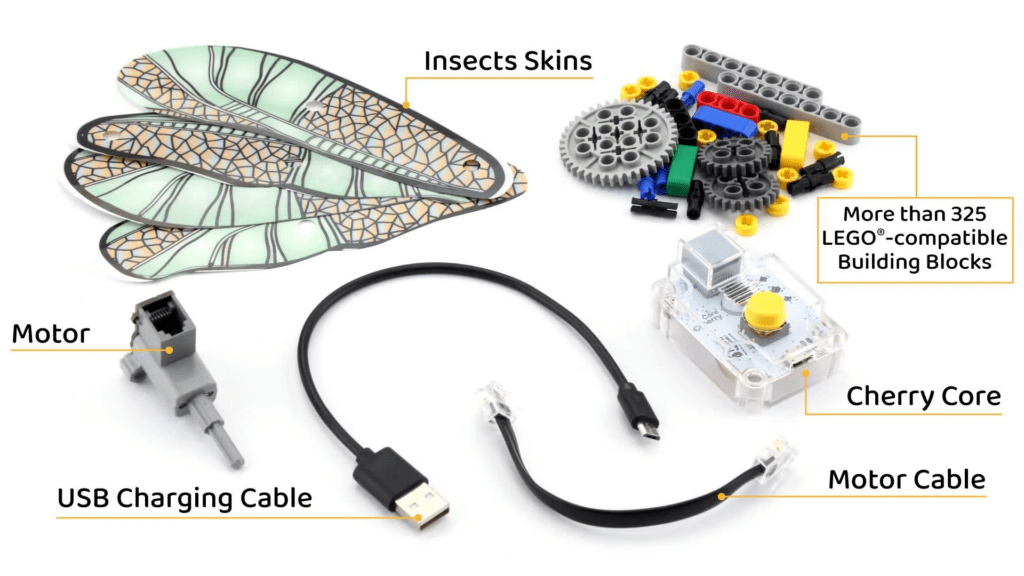
Coming soon on Kickstarter
After running two successful Kickstarter campaigns, Cherry Tart is back with a new, amazing, affordable product. Back the Kickstarter campaign and be one of the first to get your hands on the Cherry Tart crafty series. This is a great opportunity to support an innovative, educational, and fun product that will spark your creativity and imagination. Let’s build something amazing together!
